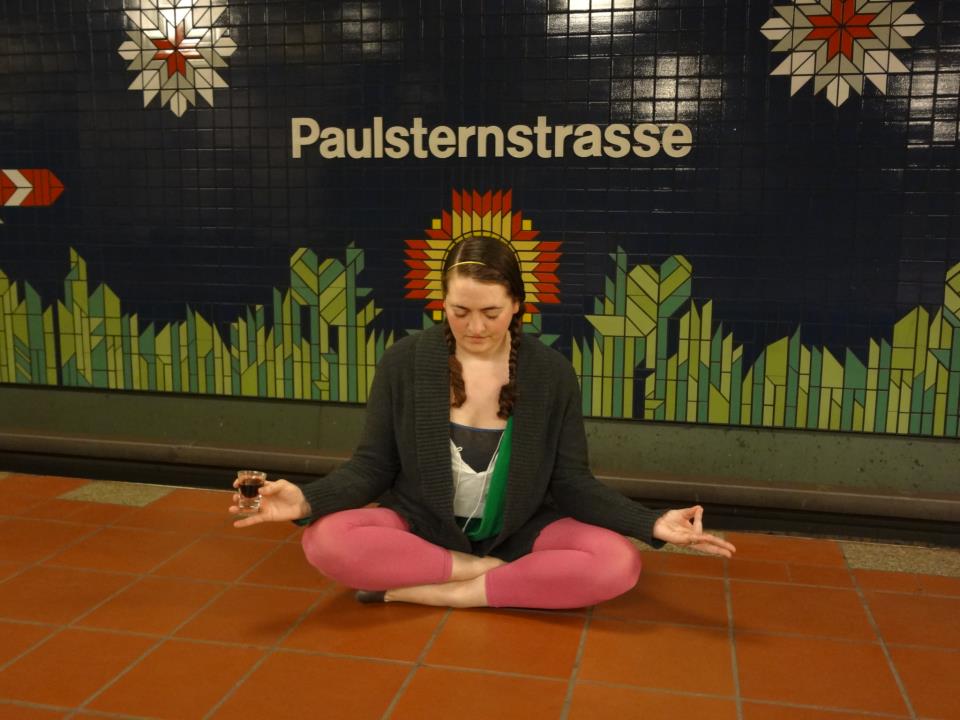I have heard this period between Christmas and New Years described as Zwischen den Jahren, or “between the years”. It is a quiet time where Germans spend quality time with friends and loved ones, chatting and drinking and eating at homes as many restaurants and shops remain closed.
Traditionally, this voluntary seclusion had to do with the spirits who were apparently running wild between the holidays. You weren’t supposed to hang laundry or prepare sweets as those were sure to tempt naughty spirits. Thus the creation of favorite Christmas items like Stollen which has a seemingly never-ending shelf life.
My family, however, has fallen into the tradition of going on vacation between Christmas and New Years. It is a way of prolonging the magic of the holidays and not returning to reality just yet. One year it was Athens, another Brussels, last year in Paris, and this year in the Netherlands.

Quintessential Dutch Photo: Erin Porter
We based ourselves in Haarlem, a charming city a short 15 minute train ride outside of Amsterdam. From here we went into the cultural capitol of the Netherlands, walked all over Haarlem, and took a day trip to Leiden and the seaside at Zandvoort. Every day we cooed at another picturesque roof line, sighed as we crossed innumerable dreamy bridges, and thought to ourselves, “Yeah, we could live here”.
It was just so nice! I love Berlin, its grit and its grandeur. But for a brief moment in time it was so sweet to greet our neighbors on our cobble-stoned lane, bedecked in climbing vines and each with its own bench out front, and see ourselves staying here forever.
The one instance where we let out our Berliner schnauze did not go well. We had lined up where it looked like the bus would come, navigating around the loads of bikes to the bus stop. The line we wanted appeared clearly marked on the electric sign. We saw a bus pull up a moment later about 800 meters away. Nervously we watched it, wondering if we should run for it. Before we decided it pulled away, passing right by us.
We moved to the other location, complaining to each other. Another bus pulled up and my husband asked in his best Dutch if this was also going to central station. The driver didn’t understand at first, then rolled his eyes and said yes. Asking him to open the middle door for the stroller solicited another eye roll.
Now fuming, my husband stomped on the bus muttering “Alles gut?” snidely. I feel like in Berlin, my husband’s displeasure would have been completely ignored, or possibly they would have snapped back. The Dutch driver was having none of it. He got up and asked if we were going to have a problem. My family – me, two kids, my father-in-law, and my husband – were 2 seconds from getting thrown off the bus. We acquiesced and were allowed to proceed on our journey, my husband now very quietly furious.
The thing is, the languages share some similarities, as do the people. We were fooled into thinking we understood enough to seamlessly fit in. Though similar, they are different.
Similarities between German and Dutch
German and Dutch are both Germanic languages (obvs). They are part of the West Germanic language which also includes English, Afrikaans, and even Yiddish (as well as several others). The other two branches include Northern (which has Swedish, Norwegian and Danish) and the Eastern branch which is completely extinct.
Though there are a variety of accents and dialects, there is a form of standardized German known as Hochdeutsch (High German) that all German-speakers (even the Swiss) should be able to speak. Dutch has also been standardized but has a wide range of dialects. For example, Flemish is a Dutch dialect spoken in northern Belgium.
I was thrilled to understand a word here and there listening to the Dutch, but by no means can I understand Dutch as a middling German-speaker. My husband who is fluent in German did much better than I, but still can’t speak Dutch. The written word was easiest for him, then listening, then speaking was near impossible (as proven in the experience detailed above). I read that the lexical similarity between German and Dutch is similar to that between Spanish and Italian.

Tourists in the Netherlands PHOTO: Erin Porter
Differences Between German and Dutch
Clearly, the two languages cannot be confused for one in the same by even the most novice of language learners.
There is the issue of region, as German is an official language in Germany, Austria, Switzerland, Belgium, Luxembourg and Liechtenstein, while Dutch is an official language in the Netherlands, Belgium, Suriname, Aruba, Curaçao and Sint Maarten.
Dutch also is a bit more simple in that German has 4 cases while Dutch has none. German also has 3 articles (the infamous der, die and das), while Dutch only has 2. I am sure that only makes it a little easier to learn with that very specific guttural pronunciation the Dutch cheerful bounce through.
The written word of Dutch is also fascinating coming from a German background. There are oh-so-many extra vowels – hello Haarlem and Zandvoort from our visit. Words like finden (to find) are also sneakily close in Dutch, spelled vinden. As a native English-speaker, there are also some surprising similarities like our “water” stays “Water” in Dutch, while it becomes “Wasser” in German. So close, and yet so far away.
Maybe we couldn’t live in the Netherlands after all…



0 Comments